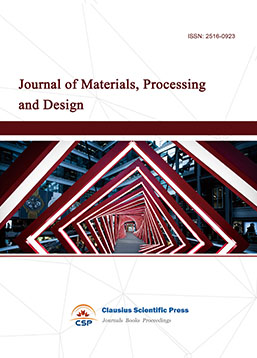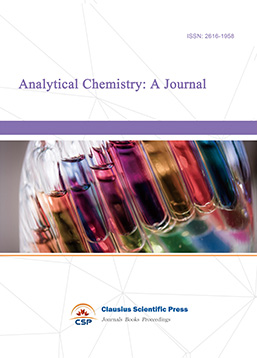Numerical study of viscous fingering patterns under annular boundaries based on the Hele-Shaw model
DOI: 10.23977/mpcr.2024.040111 | Downloads: 15 | Views: 1193
Author(s)
Jingying Wei 1
Affiliation(s)
1 School of Applied Physics, Chengdu University of Technology, Chengdu, 610059, China
Corresponding Author
Jingying WeiABSTRACT
In porous media, when a low-viscosity fluid displaces a high-viscosity fluid, the phenomenon of viscous fingering is formed due to the instability and nonlinear effect at the interface of the two phases, which exhibits a complex branching structure and self-similarity. In numerical simulations, the Hele-Shaw model is often used to simulate the replacement phenomenon in porous media, and the fractal evolution of viscous fingering can also be observed. Based on the two-phase Darcy's law, this paper investigates the influence parameters and fractal differences related to the Hele-Shaw model for the radial injection of miscible two-phase under an annular boundary, in terms of the spreading area and the boundary length. The analytical results show that with the increase in log-viscosity ratio, a tendency of more elongated finger structures and a consequent increase in the number of bifurcations of the main branches are observed. Meanwhile, the decrease in diffusion coefficient led to a more complex fractal structure and further enhanced the splitting effect. In addition, the higher injection rate of the replacement fluid extends the spreading range of the interface, which increases the complexity of the finger structure and the number of "fingers". These results highlight the significant influence of convection and diffusion parameters on the morphology and dynamics of multiphase fluid interfaces and provide important theoretical support for understanding and controlling related engineering and environmental processes.
KEYWORDS
Fractal Finger, Viscous Fingering, Hele-Shaw, Annular BoundaryCITE THIS PAPER
Jingying Wei, Numerical study of viscous fingering patterns under annular boundaries based on the Hele-Shaw model. Modern Physical Chemistry Research (2024) Vol. 4: 81-87. DOI: http://dx.doi.org/10.23977/mpcr.2024.040111.
REFERENCES
[1] Saffman P G, Taylor G I. The penetration of a fluid into a porous medium or Hele-Shaw cell containing a more viscous liquid [J]. Proceedings of the Royal Society of London Series A Mathematical and Physical Sciences, 1958, 245(1242): 312-329.
[2] Pramanik S, Mishra M. Comparison of Korteweg stresses effect on the fingering instability of higher or less viscous miscible slices: Linear stability analysis [J]. Chemical Engineering Science, 2014, 110: 144-152.
[3] Deki Y F, Nagatsu Y, Mishra M, et al. Numerical study of the effect of Peclet number on miscible viscous fingering with effective interfacial tension [J]. Journal of Fluid Mechanics, 2023, 965: A22.
[4] Nand S, Sharma V, Das S K, et al. Effect of Hele–Shaw cell gap on radial viscous fingering [J]. Scientific Reports, 2022, 12(1): 18967.
[5] Sharma V, Othman H B, Nagatsu Y, et al. Viscous fingering of miscible annular ring [J]. Journal of Fluid Mechanics, 2021, 916: A14.
[6] Mishra M, Martin M, De Wit A. Differences in miscible viscous fingering of finite width slices with positive or negative log-mobility ratio [J]. Physical Review E, 2008, 78(6): 066306.
| Downloads: | 964 |
|---|---|
| Visits: | 64119 |
Sponsors, Associates, and Links
-
Forging and Forming

-
Composites and Nano Engineering

-
Journal of Materials, Processing and Design

-
Metallic foams

-
Smart Structures, Materials and Systems

-
Chemistry and Physics of Polymers

-
Analytical Chemistry: A Journal

-
Inorganic Chemistry: A Journal

-
Organic Chemistry: A Journal

-
Progress in Materials Chemistry and Physics

-
Transactions on Industrial Catalysis

-
Fuels and Combustion

-
Casting, Welding and Solidification

-
Journal of Membrane Technology

-
Journal of Heat Treatment and Surface Engineering

-
Trends in Biochemical Engineering

-
Ceramic and Glass Technology

-
Transactions on Metals and Alloys

-
High Performance Structures and Materials

-
Rheology Letters

-
Plasticity Frontiers

-
Corrosion and Wear of Materials

-
Fluids, Heat and Mass Transfer

-
International Journal of Geochemistry

-
Diamond and Carbon Materials

-
Advances in Magnetism and Magnetic Materials

-
Advances in Fuel Cell

-
Journal of Biomaterials and Biomechanics


 Download as PDF
Download as PDF